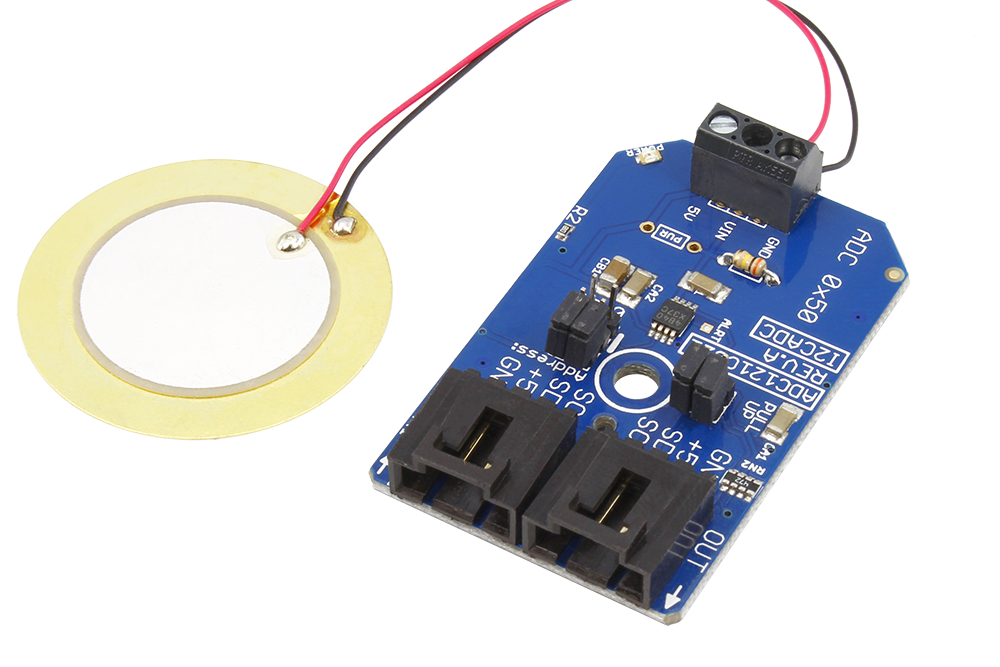
This phenomenon is called the positive piezoelectric effect. When the external force is removed, it will return to the normal uncharged state.

Piezoelectric sensors can be roughly divided into four types, namely: piezoelectric load cells, piezoelectric pressure sensors, piezoelectric acceleration sensors and polymer pressure sensors.Ĭertain substances, when they are deformed by applying force in a certain direction, will generate electric charges on a certain surface. The use of this material can be made into a new type of piezoelectric sensor integrating sensitive components and electronic circuits, which is very promising. Since the 1960s, crystals with both semiconductor properties and piezoelectric properties, such as zinc sulfide, zinc oxide, and calcium sulfide, have been discovered. It has unique advantages in matching the acoustic resistance of air and is a new type of electro-acoustic material with great development potential. Organic piezoelectric materials can be mass-produced and made into larger areas. Organic piezoelectric materials include more than ten kinds of polymer materials such as polyvinylidene fluoride, polyvinyl fluoride, and nylon. The disadvantage is that it has pyroelectricity, which will interfere with the measurement of mechanical quantities. The advantages of piezoelectric ceramics are convenient firing, easy shaping, humidity resistance, and high-temperature resistance. Piezoelectric ceramics include barium titanate ceramics belonging to the binary system, lead zirconate titanate series ceramics, niobate series ceramics, and lead magnesium niobate ceramics belonging to the ternary system. Other piezoelectric single crystals include lithium niobate, lithium tantalate, lithium gallate, and bismuth germanate suitable for high-temperature radiation environments. The most commonly used piezoelectric sensors are various types of piezoelectric ceramics and quartz crystals in piezoelectric single crystals. Piezoelectric materials can be divided into a piezoelectric single crystal, piezoelectric polycrystalline, and organic piezoelectric materials. For example, quartz crystal does not have the piezoelectric effect of volume deformation but has a good piezoelectric effect of thickness deformation and length deformation.įive basic forms of force deformation of piezoelectric sensitive components Ⅲ Piezoelectric material Piezoelectric crystals are anisotropic, and not all crystals can produce piezoelectric effects in these five states. There are five basic forms of force deformation of piezoelectric sensitive components: thickness deformation type, length deformation type, volume deformation type, thickness shear type, and plane shear-type (see figure). Transmitters made with the inverse piezoelectric effect can be used in electroacoustic and ultrasonic engineering. The inverse piezoelectric effect refers to the phenomenon that the application of an alternating electric field to the crystal causes mechanical deformation of the crystal, also known as the electrostrictive effect. Most piezoelectric sensors are made using the positive piezoelectric effect. When the direction of external force changes, the polarity of the charge also changes the amount of charge generated by the crystal is proportional to the magnitude of the external force. The positive piezoelectric effect means that when the crystal is subjected to an external force in a fixed direction, electric polarization occurs inside the crystal, and charges of opposite signs are generated on two surfaces at the same time. When the external force is removed, the crystal returns to an uncharged state. The piezoelectric effect can be divided into the positive piezoelectric effect and the inverse piezoelectric effect. The disadvantage is that some piezoelectric materials need moisture-proof measures, and the output DC response is poor. High input impedance circuits or charge amplifiers are needed to overcome this defect. Its advantages are wide bandwidth, high sensitivity, high signal-to-noise ratio, simple structure, reliable work, and lightweight.

Piezoelectric sensors are used to measure force and non-electrical physical quantities that can be transformed into electricity. Then it becomes a power output proportional to the external force received. The charge is amplified by the charge amplifier and the measuring circuit and transformed into impedance. The piezoelectric material generates an electric charge on the surface after being forced.

Its sensitive components are made of piezoelectric materials. It is a self-generating and electromechanical conversion sensor. Used for processing technology monitoringĪ piezoelectric sensor is a sensor based on the piezoelectric effect. Used for structural static deformation controlĤ.


 0 kommentar(er)
0 kommentar(er)
